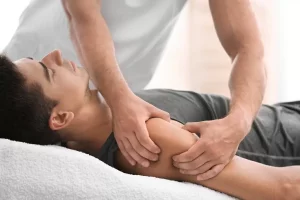In our tech-driven world, the concept of a digital detox has gained significant attention. As technology continues to permeate every aspect of our lives, it’s crucial to explore the potential benefits of disconnecting from our devices and engaging in non-clinical rehab activities.
This article delves into the transformative power of stepping away from screens and embracing alternative forms of therapy and self-care. By examining the relationship between technology and non-clinical rehab, we can understand the importance of finding balance in our digital lives and the potential for personal growth and healing that comes with disconnecting from technology.
So, how can embarking on a digital detox journey lead to improved mental well-being, enhanced productivity, and a greater sense of connection with oneself and others? Let’s explore the non-clinical rehab benefits in the digital age.
Key Takeaways
- Non-clinical rehab benefits address underlying causes of addiction and behavioral challenges while incorporating therapeutic modalities like art therapy, music therapy, and nature-based activities.
- Engaging in a digital detox allows individuals to reset their relationship with technology, leading to improved mood, decreased stress levels, and increased productivity.
- Technology plays a crucial role in non-clinical rehab, offering resources for addiction recovery, virtual reality simulations for practicing coping strategies, and wearable devices for monitoring overall well-being.
- Practical ways to incorporate benefits of non-clinical rehab into daily life include setting boundaries with technology, practicing mindfulness and self-care, engaging in physical activities, and prioritizing activities that promote well-being and reduce screen time.
The Importance of Non-Clinical Rehab Benefits
Non-clinical rehab benefits play a crucial role in promoting holistic healing and recovery for individuals seeking to overcome addiction or other behavioral challenges. These benefits encompass a wide range of activities and therapies that are designed to support individuals in their journey towards recovery.
One of the key advantages of non-clinical rehab is the focus on addressing the underlying causes of addiction or behavioral challenges, rather than just treating the symptoms. This approach allows individuals to gain a deeper understanding of themselves and their patterns of behavior, which is essential for long-term recovery.
Non-clinical rehab programs often incorporate various therapeutic modalities such as art therapy, music therapy, and nature-based activities. These activities provide individuals with alternative ways to express themselves and explore their emotions, which can be particularly helpful for those who struggle with verbal communication. Additionally, non-clinical rehab programs often include mindfulness practices, meditation, and yoga, which have been shown to reduce stress, improve mental well-being, and promote overall healing.
Another important aspect of non-clinical rehab benefits is the sense of community that is created within these programs. Individuals are able to connect with others who are going through similar experiences, which can provide a sense of belonging and support. Peer support has been shown to be a powerful tool in recovery, as individuals can learn from each other, share their challenges and successes, and provide encouragement.

Understanding the Impact of Digital Detox on Mental Health
Moving beyond the discussion of benefits of non-clinical rehab, it is important to explore the impact of digital detox on mental health. In today’s digital age, where technology has become an integral part of our lives, taking a break from screens and digital devices can have a significant positive impact on mental well-being.
Research has shown that excessive use of technology, such as smartphones and social media, can contribute to feelings of anxiety, depression, and poor sleep quality. Constant exposure to screens and the constant need for social validation through likes and comments can also negatively affect self-esteem and body image.
Engaging in a digital detox, which involves disconnecting from technology for a certain period of time, allows individuals to reset their relationship with technology and focus on their mental health. It provides an opportunity to reconnect with oneself, engage in meaningful activities, and build healthy relationships with others.
Studies have demonstrated that digital detoxes can lead to improved mood, decreased stress levels, and increased productivity. It can also enhance creativity, attention span, and overall well-being.
Exploring the Role of Technology in Non-Clinical Rehab
Technology plays a crucial role in non-clinical rehab, offering innovative solutions and tools to support individuals on their journey to recovery. With the advancement of technology, there are various ways in which it can be utilized in non-clinical rehab settings:
- Mobile Applications: There are numerous mobile applications available that provide resources for addiction recovery, such as tracking progress, offering motivational support, and providing access to online support groups.
- Virtual Reality: Virtual reality technology is being used to simulate real-life scenarios that trigger cravings or high-risk situations, providing individuals with a safe environment to practice coping strategies and develop resilience.
- Wearable Devices: Wearable devices, such as fitness trackers and smartwatches, can monitor physical activity, sleep patterns, and even heart rate variability, providing individuals with valuable insights into their overall well-being and progress in recovery.
These technological advancements offer individuals in non-clinical rehab settings the opportunity to access support and resources conveniently, anytime and anywhere. By incorporating technology into non-clinical rehab, individuals can have personalized and accessible tools to aid in their recovery journey.
However, it is important to strike a balance between utilizing technology and maintaining human connection and support, as technology should complement, rather than replace, human interaction and therapeutic interventions.
Practical Ways to Incorporate Non-Clinical Rehab Benefits Into Daily Life
Continuing the exploration of incorporating technology into non-clinical rehab settings, let’s now focus on practical ways to integrate the benefits of non-clinical rehab into daily life. Non-clinical rehab offers a range of benefits, including improved mental health, increased self-awareness, and enhanced overall well-being. These benefits can be incorporated into daily life through various strategies.
Firstly, setting boundaries with technology can be a practical way to incorporate non-clinical rehab benefits. This can involve designating specific times for device-free activities, such as reading, exercise, or spending quality time with loved ones. By creating these boundaries, individuals can reduce screen time and prioritize activities that promote well-being.
Secondly, practicing mindfulness and self-care can also be beneficial. Taking time each day to engage in activities that promote relaxation and self-reflection, such as meditation or journaling, can help individuals detach from technology and focus on their mental and emotional well-being.
Additionally, engaging in physical activities and spending time in nature can further enhance the benefits of non-clinical rehab. Going for walks, participating in outdoor sports, or simply spending time in green spaces can improve mood, reduce stress, and increase overall well-being.
Incorporating non-clinical rehab benefits into daily life may require conscious effort and commitment. However, by implementing these practical strategies, individuals can experience the positive effects of non-clinical rehab and improve their overall quality of life.
Overcoming Challenges and Maximizing Non-Clinical Rehab Benefits
To fully maximize the benefits of non-clinical rehab and overcome the challenges that may arise, individuals must be proactive in their approach and make conscious efforts towards their recovery. Non-clinical rehab offers a unique opportunity for individuals to regain control of their lives and improve their overall well-being. However, it is essential to acknowledge the challenges that may come along the way and find ways to overcome them.
Here are three practical ways to overcome challenges and maximize the benefits of non-clinical rehab:
1. Establish a Support Network:
- Surround yourself with a supportive network of friends, family, or support groups who understand your journey.
- Share your goals, challenges, and successes with them, as their encouragement and understanding can be crucial in your recovery.
2. Set Realistic Goals:
- Break down your recovery journey into smaller, achievable goals.
- Celebrate each milestone, as it will provide motivation and reinforce your progress.
3. Practice Self-Care:
- Prioritize self-care activities such as exercise, meditation, and healthy eating to support your physical and mental well-being.
- Engage in activities that bring you joy and help you relax, as they can contribute to your overall recovery.
Frequently Asked Questions
What Are Some Examples of Non-Clinical Rehab Benefits?
Non-clinical rehab benefits can include improved mental health, increased self-awareness, better stress management, enhanced relationships, and a greater sense of purpose. These benefits can be achieved through various activities and therapies that do not involve traditional clinical settings.
How Does Digital Detox Affect Mental Health?
Digital detox can have a significant impact on mental health. By disconnecting from technology, individuals can reduce stress, improve focus, enhance sleep quality, and foster better relationships. It allows for a healthier balance between the digital world and real-life experiences.
What Role Does Technology Play in Non-Clinical Rehab?
Technology plays a crucial role in non-clinical rehab by providing tools and resources that support individuals in their journey towards recovery. From mobile apps to virtual therapy sessions, technology offers convenient and accessible solutions for self-care and mental well-being.
How Can Non-Clinical Rehab Benefits Be Incorporated Into Daily Life?
Non-clinical rehab benefits can be incorporated into daily life through various strategies such as setting boundaries with technology, engaging in physical activities, practicing mindfulness, seeking social support, and pursuing hobbies that promote personal growth and well-being.
What Challenges Might Arise When Trying to Maximize Non-Clinical Rehab Benefits?
When trying to maximize non-clinical rehab benefits, challenges may arise in terms of maintaining motivation, establishing new routines, and dealing with potential setbacks. It is crucial to have a support system and strategies in place to overcome these obstacles.
Conclusion
In conclusion, the concept of a digital detox and engaging in non-clinical rehab activities holds great potential for improving mental well-being and productivity in our increasingly digitized world. By disconnecting from digital devices and embracing alternative forms of therapy and self-care, individuals can find a greater sense of connection with themselves and others. It is crucial to find balance in our digital lives and recognize the transformative power of stepping away from screens for personal growth and healing.
You may also like to read:
Crafting Impact-Resistant Football Helmets for Ultimate





